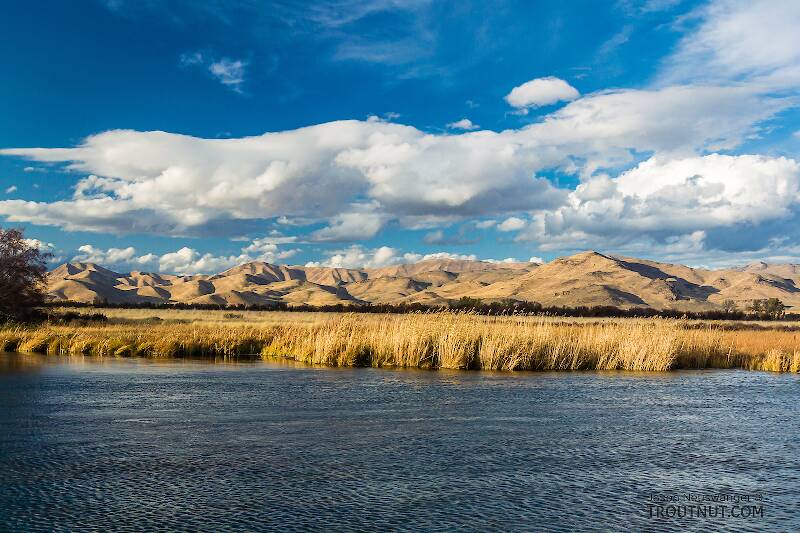
Blue-winged Olives
Baetis
Tiny Baetis mayflies are perhaps the most commonly encountered and imitated by anglers on all American trout streams due to their great abundance, widespread distribution, and trout-friendly emergence habits.


Ameletus (Brown Dun) Mayfly Nymph Pictures
I spent ages trying to identify this one but ultimately couldn't narrow it down to species. I'm guessing it's either a species that has not yet been reported from Idaho or a species with some variation in characteristics not accounted for in the current key (Zloty 1997), which is only for Alberta but happens to contain all the species documented in Idaho except for one (which is rare and only in a different part of the state from this one).
Here are my raw notes from the microscope session:
8. Ameletus nymph (genus 100 % based on mouth parts under microscope)
1. This is probably a species with the nymph either not described yet or not reported in Idaho (or Alberta).
2. There is a key to the species of nymphs in Alberta (Zloty 1997) which includes all but one (A. tolae) of the species listed in Idaho by IDFG (https://idfg.idaho.gov/species/taxa/8607), and A. tolae is only listed from one drainage in north-central Idaho. So my specimen should be in that key. However, it doesn’t fit any of them.
1. The antennae are pale with brown at the apex. This doesn’t fit any of the species they described.
2. The labrum is almost completely dark brown, maybe a bit paler toward the apex.
3. Following the key in Zloty 1997 basically rules out every species reported in Idaho except for tolae, which would be outside its range:
1. Couplet 1 : There definitely aren’t strong ganglionic markings on sternites 2-8 (100 % rules out similior and celer) —> 3
2. Couplet 3 : Posterior margins of sternites 6-8 lack large spines (80 % sure) but other characteristics rule out the species if there were spines (validus, oregonensis, subnotatus) —> 6
3. Couplet 6 : Mesal gill extension present, but pretty slim… similar to Fig. 23B or 23G —> 7
4. Couplet 7 : Obviouly gos to 8
5. Couplet 8 : Small size and time of year rules out velox, tergite patterna and gill shape rules out pritchardi (which is not reported in Idaho anyway). Additional features (antennae, labrum color) rule out a small velox.
6. Backtrack to call the mesal gill extension “well developed†—> 9
7. Couplet 9 : Tail coloration obviously —> 10
8. Couplet 10 : Supposing it’s a small specimen of a “larger species†leads to 11, in which femora coloration and timing rule out vernalis, and color pattern rules out bellulus. Mesal extension on gills from species description very conclusively rules out bellulus. Therefore, calling it a “smaller species†is the correct path —> 12
9. Couplet 12 : Sternites without well-defined longitudinal stripe —> cooki. However, tergite color patterns don’t even come close to matching ANY of the 3 species from this point on (cooki, sparsatus, suffusus). From the species descriptions:
1. cooki: Antenna and labrum colors don’t fit. Mesal extension should be larger and tracheation lighter, to be this species.
2. sparsatus: Antenna and labrum colors don’t fit. Mesal extension should be larger. Postero-lateral spines should be very prominent, not barely noticeable.
3. suffusus: Also bad fit to antenna and labrum colors, mesal extension, and especially gill tracheation.
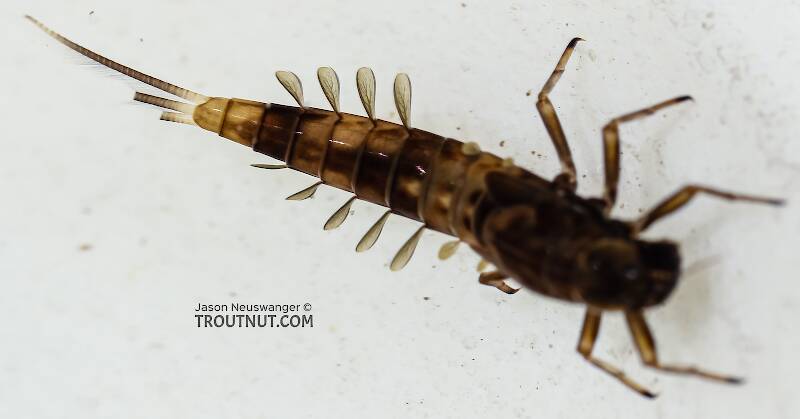
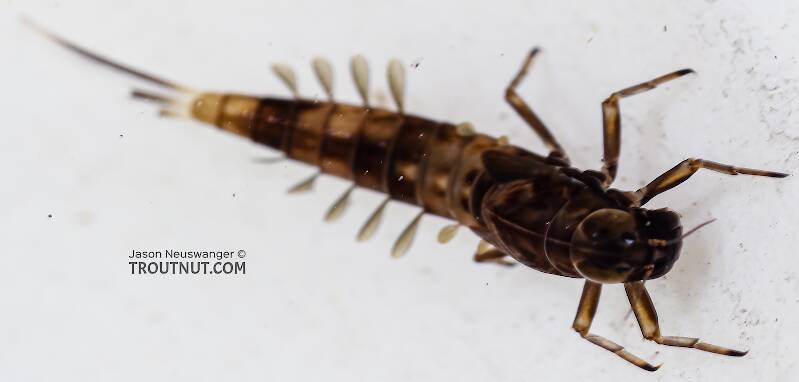
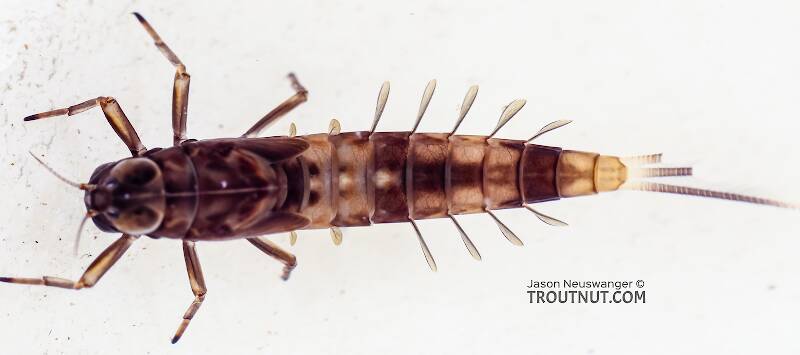
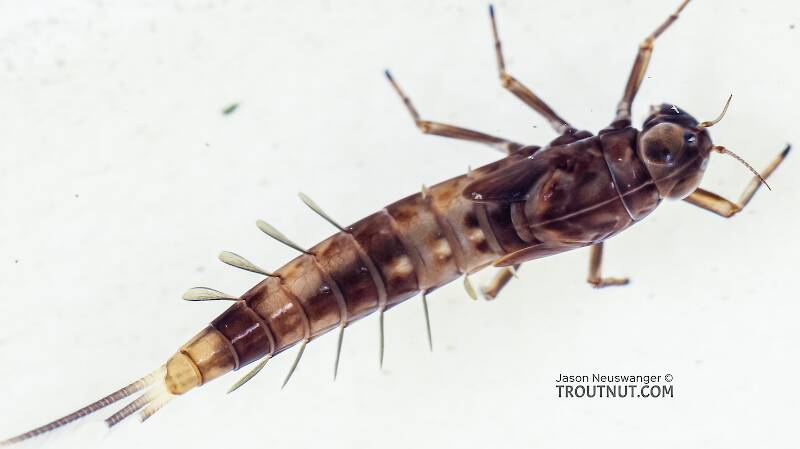
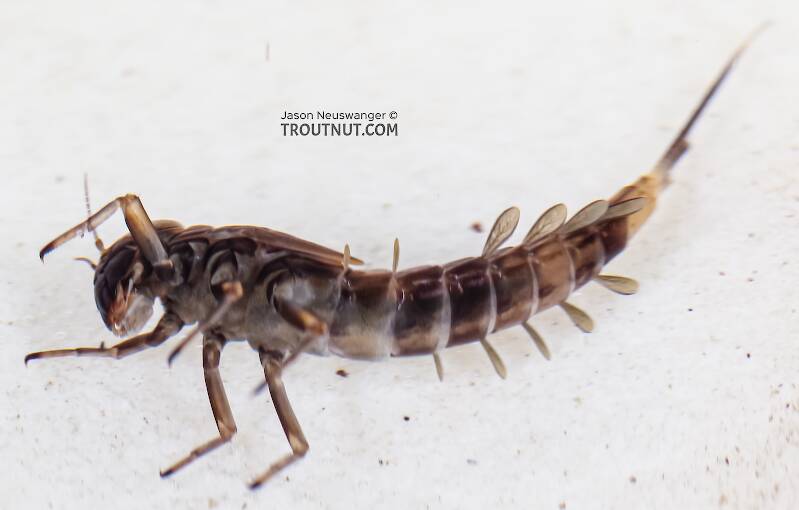
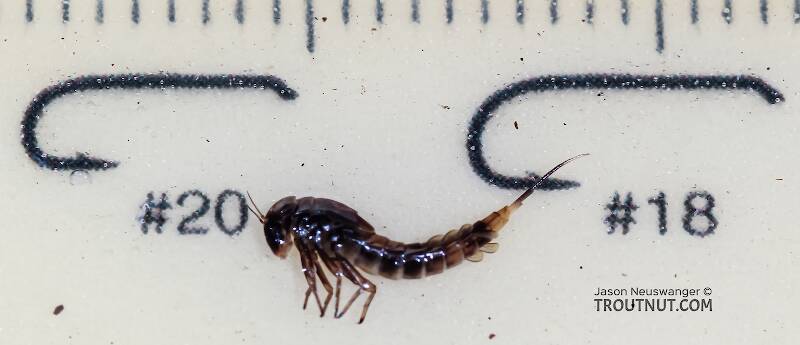
This mayfly was collected from Green Lake Outlet in Idaho on August 4th, 2020 and added to Troutnut.com by Troutnut on August 20th, 2020.
Start a Discussion of Nymph
Ameletus (Brown Dun) Mayfly Nymph Pictures
Collection details
Date: August 4th, 2020
Added to site: August 20th, 2020
Author: Troutnut

